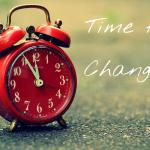After reading through the CDC report that’s the source of the “1 in 5 college women are sexually assaulted” figure over the weekend, this morning, the Tribune had a brief article about a new CDC report. Looking online, I found this, from the Washington Post: “CDC: Nearly 1 in 5 women have been raped.”
Having learned that the true figure from the report was more like “1.5% of women at large universities report being raped in a study of college women,” I was immediately suspicious of this new, and magically identical 1 in 5 figure.
This new figure comes from the National Intimate Partner and Sexual Violence Survey, which is, apparently, run by the CDC itself, and the data is from 2011 (it took 3 years to process it?). Of the survey, the Post says, “The survey took place over cellphones and landlines, with more than 12,000 completed interviews,” but this reflects a response rate of only 33%.
The Post provides a link to the CDC, which provides the results, including tables, and the survey questions themselves.
Here are the key results:
| Women | Men | |
| Rape | 19.3 | 1.7 |
| Completed forced penetration | 11.5 | 0.7 |
| Attempted forced penetration | 6.4 | * |
| Completed alcohol- or drug-facilitated penetration | 9.3 | 1.1 |
| Other sexual violence | 43.9 | 23.4 |
| Made to penetrate | 0.6 | 6.7 |
| Sexual coercion | 12.5 | 5.8 |
| Unwanted sexual contact | 27.3 | 10.8 |
| Noncontact unwanted sexual experiences | 32.1 | 13.3 |
“Sexual coercion” seems to be the category covered by the question asking whether you’ve had sex because your partner was “doing things like telling you lies, making promises about the future they knew were untrue, threatening to end your relationship, or threatening to spread rumors about you” or by “wearing you down by repeatedly asking for sex, or showing they were unhappy.” “Unwanted sexual contact” ranges from forced sexual kissing to unwanted fondling or forcibly making “you show your sexual body parts.” And “noncontact unwanted sexual experiences” means things like a man exposing himself or the like.
Among female victims of completed rape (completed forced penetration and completed alcohol- or drug-facilitated penetration), this form of sexual violence was first experienced by an estimated 78.7% before age 25 years, by an estimated 40.4% before age 18 years (28.3% at ages 11–17 years and 12.1% at age ≤10 years), and by an estimated 38.3% at age 18–24 years. In addition, among female victims of completed rape, an estimated 15.2% first experienced this at age 25–34 years, an estimated 4.6% at age 35–44 years, and an estimated 1.5% at age ≥45 years.
However, while the report breaks down rape by age (and ethnic group), it doesn’t say anything about the distribution of survey participants by age, or of responses. One can easily imagine that older women are much less likely to be willing to talk to a surveyer about such topics — or, on the other hand, that a traditional phone call-based poll would, in general, capture fewer responses from young people. To the extent that responses are coming from 60-year olds discussing a rape when they were 20, it says nothing about the current situation. To the extent that responses are coming from 20 year olds, it says nothing about the risks of older women right here, right now.
Oh, and that response rate, in general, is enough to take these statistics with a huge grain of salt, as women who have been victimized are far more likely to respond than those who haven’t.
Bottom line: I could make a career out of criticizing reports, if someone would pay me. But in the meantime, reports such as this, with dramatic headline numbers, but, ultimately, a lack of more meaningful conclusions, could do more harm than good.












